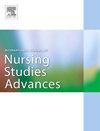Function focused care in hospital among nurses and patients from geriatric and neurology wards: A mixed method process evaluation
IF 3.1
Q1 NURSING
International Journal of Nursing Studies Advances
Pub Date : 2025-08-05
DOI:10.1016/j.ijnsa.2025.100401
引用次数: 0
Abstract
Background
Function Focused Care is a promising approach stimulating physical activity of patients admitted to hospital. In studying the effectiveness, patients receiving Function Focused Care in Hospital were admitted 3.3 days shorter than patients receiving usual care. However, no differences were found in functional status. Process evaluations alongside an effect studies create an understanding implementation fidelity, of mechanisms of impact, contextual factors.
Objective
to gain insight into the experiences of nurses and patients, and to give insight into implementation fidelity, mechanisms of impact, and contextual factors while implementing Function Focused Care in Hospital on geriatric and neurologic hospital wards.
Design
convergent parallel mixed-methods study, alongside a stepped wedge clinical trial.
Setting(s)
four hospital wards of two Dutch hospitals
Participants
nurses, nursing students and care assistants (n = 123), and patients (n = 24).
Methods
Data for the process evaluation was collected before the implementation of Function Focused Care in Hospital (T0), directly after implementation (T1), and four months after implementation (T2). Data was obtained from patient interviews, focus group interviews with nurses, questionnaires, observations, screening of electronic patients’ records, and logbook notes. For the qualitative data thematic analyses and for quantitative data descriptive statistics were used. The results of these analyses were synthesized into overarching findings.
Results
Findings from the observations showed the care delivery according to the Function Focused Care in Hospital principles increased from 60 % in the control condition to 75 % in the intervention condition. Moreover, nurses stated that patients were only assisted when needed and nurses often asked about their abilities to perform ADL and then encouraged them to do as much as they could themselves. Nevertheless, patients don’t recognize Function Focused Care in Hospital. The results suggest that the implementation fidelity was influenced by different working mechanisms and contextual factors which led to different experiences from nurses, coaches and patients in promoting patient engagement and functional independence. The synthesized findings show that lessons can be learned with regards to continuity of the care provided in the interprofessional collaboration, the challenge in providing personalized care given the current time constraints, the phenomenon of being unconscious incompetent observed in the nurses, and difficulties in demonstrating nursing leadership and autonomy.
Conclusions
Implementation of Function Focused Care in Hospital improved care delivery but highlighted challenges in personalized care, interprofessional collaboration, and nursing leadership, influenced by various contextual factors and working mechanisms.
Registration
https://onderzoekmetmensen.nl/en/trial/24287 (date of first recruitment: 05–02–2016)
老年和神经内科病房护士和患者的功能重点护理:一种混合方法过程评价
背景功能集中护理是一种很有前途的方法,可以刺激住院患者的身体活动。在疗效研究中,接受功能重点护理的患者比接受常规护理的患者住院时间缩短3.3天。然而,在功能状态上没有发现差异。过程评估与效果研究一起创造了对实施保真度,影响机制,背景因素的理解。目的了解护士和患者在老年和神经内科病房实施功能聚焦式护理的经验,并了解其实施的保真度、影响机制和相关因素。设计趋同平行混合方法研究,同时进行阶梯楔形临床试验。设置两家荷兰医院的四个病房,参与者为护士、护生和护理助理(n = 123)和患者(n = 24)。方法收集功能重点护理在医院实施前(T0)、实施后直接(T1)和实施后4个月(T2)的过程评价数据。数据来自患者访谈、护士焦点小组访谈、问卷调查、观察、电子病历筛选和日志笔记。定性数据采用专题分析,定量数据采用描述性统计。这些分析的结果被综合成总体的发现。结果观察结果显示,根据医院功能重点护理原则提供的护理从对照组的60%增加到干预组的75%。此外,护士表示,患者只有在需要的时候才会得到帮助,护士经常询问他们进行日常生活自理的能力,然后鼓励他们尽可能多地自己去做。然而,患者并不认可医院的功能重点护理。结果表明,实施保真度受不同工作机制和情境因素的影响,导致护士、教练员和患者在促进患者参与和功能独立方面的经验不同。综合研究结果表明,在跨专业合作中提供护理的连续性,在当前时间限制下提供个性化护理的挑战,在护士中观察到的无意识无能现象,以及在展示护理领导力和自主性方面的困难方面,可以学到经验教训。结论医院实施功能聚焦护理改善了护理服务,但在个性化护理、跨专业协作和护理领导方面存在挑战,受各种情境因素和工作机制的影响。Nl /en/trial/24287(首次招聘日期:05-02-2016)
本文章由计算机程序翻译,如有差异,请以英文原文为准。
求助全文
约1分钟内获得全文
求助全文
来源期刊

International Journal of Nursing Studies Advances
Nursing-General Nursing
CiteScore
5.80
自引率
0.00%
发文量
45
审稿时长
81 days
 求助内容:
求助内容: 应助结果提醒方式:
应助结果提醒方式:


